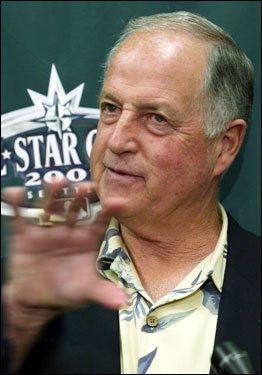Wednesday, January 18, 2012
Game 14: Wells Fargo Center
Nuggets 108, Sixers 104 OT
PHILADELPHIA — It’s not unreasonable to believe that David Stern is the greatest commissioner in the history of American major league sports. A lawyer by trade with a background in marketing, Stern took over the NBA from Larry O’Brien—the James Buchanan of commissioners—and ushered the game into a new era.
Actually, Stern had plenty of help. It just so happened that Stern became the commissioner just when Larry Bird and Magic Johnson were coming into their primes, plus, Michael Jordan, Charles Barkley, Hakeem Olajuwon and John Stockton entered the NBA during Stern’s first year as commissioner.
But give the guy credit for not sitting idly by. Under Stern’s watch, the NBA went from being a league that only serious basketball fans followed to an American-based Premier league of sorts. Internationally, the two most popular team sports are soccer and basketball and that comes in no small part from Stern’s ability to market his league.
That doesn’t mean the league is not without its flaws. After all, since Stern took over the NBA, labor peace has been virtually non-existent. In fact, there have been four player lockouts, including one in 1999 that left the league with a 50-game regular season and this year’s lockout that has teams playing 66 games in four months.
So when Stern turned up in Philly for a media session before the game against the Nuggets, one of the biggest topics was the condensed season and players’ health.
“I can tell you that we had the same short training camps in the last lockout, so I don’t think that’s the problem,” Stern said during the press conference. “As for the injuries, I reserve the right to see how things play out over the next few weeks before I draw any conclusions. I will take a look at the data and then I’ll call you.”
The idea when creating the condensed schedule was to come as close to representing a full, 82-game season without playing 82 games. When the league had its 50-game season, it was too short.
“When we got together with the player representatives and made the deal, I knew that if we got it done that (Thanksgiving) weekend, we could start on Christmas and we could play 16 games every 28 days, rather than 14 games every 28 days,” Stern said. “To us, the two extra games, to get in as much as we could of the season was important, so people wouldn’t say, ‘Oh, it isn’t a representative season.’”
Stern says fans love the condensed schedule. Coaches must hate it because of all the injuries and beat up players left in the wake, but this NBA season feels like a baseball season in that there is a decent game on every night. In fact, Sixers’ coach Doug Collins told us before the game in New York that he felt like a baseball manager with all the travel and games, but so little practice time.
“You win and you lose,. People say, ‘You have too many games,’ or, if you go to 50 games, as we did before, then you get told that you are not having enough,” Stern said. “We thought the 66 games were do-able. It seems to be doing OK. We’re pretty pleased with it. From the fans’ perspective, I’ve had people telling me, it’s great, you go home and there are all these games on League Pass, and so our fans are loving it.”
From a journalists’ perspective, the season is a blast. There is tons of action and when we get home from the arena, the west coast games are burning up the TV.
However, it’s no fun writing about injuries and it’s also not much fun to see ballplayers gimp around in the locker room before and after games. Sometimes, a players’ health dominates the news end of things and we get stuck writing speculative stories about when someone will return.
Injuries are also a drag on the quality of play, too. At its best, basketball is unlike any other sport. Sometimes a basketball game is a prize fight, a ballet and a chess match all rolled into one and when players are injured, it takes some of the fun out of it.











 The Phillies decided Jimmy Rollins might need more than a day or two to recover from his ankle injury... nearly two weeks after the injury occurred.
Hey, who wants to rush into things?
The Phillies decided Jimmy Rollins might need more than a day or two to recover from his ankle injury... nearly two weeks after the injury occurred.
Hey, who wants to rush into things?




















